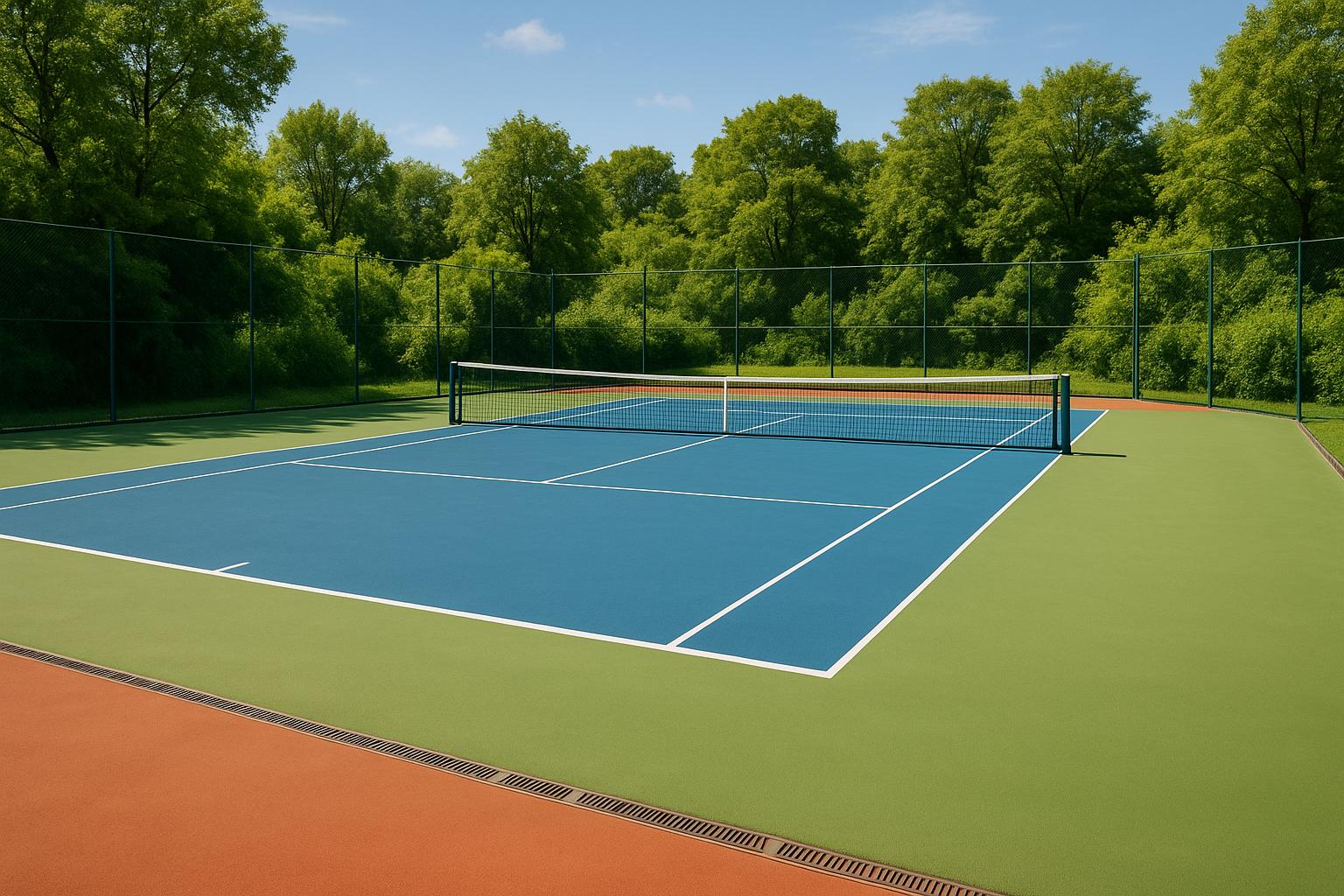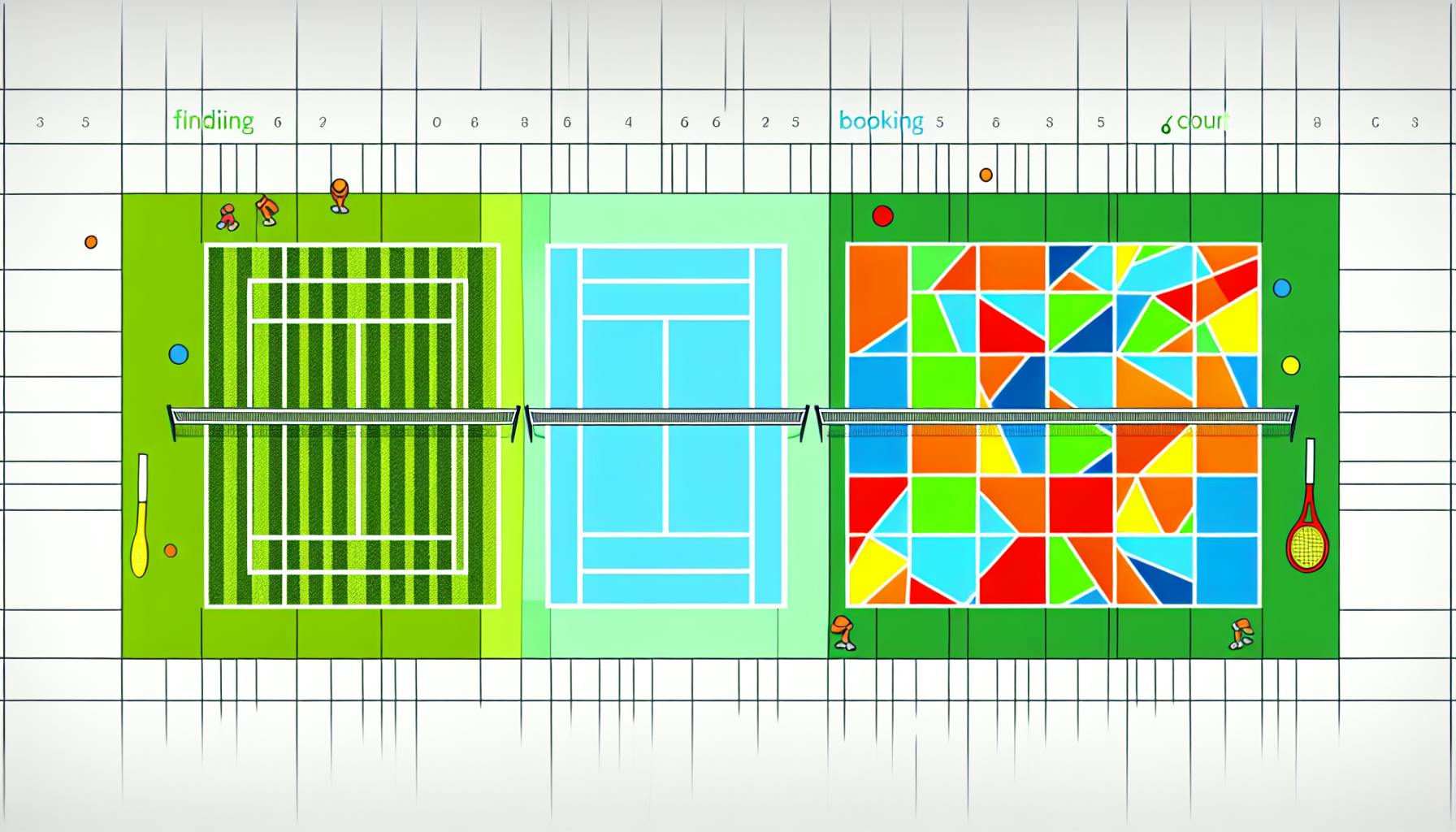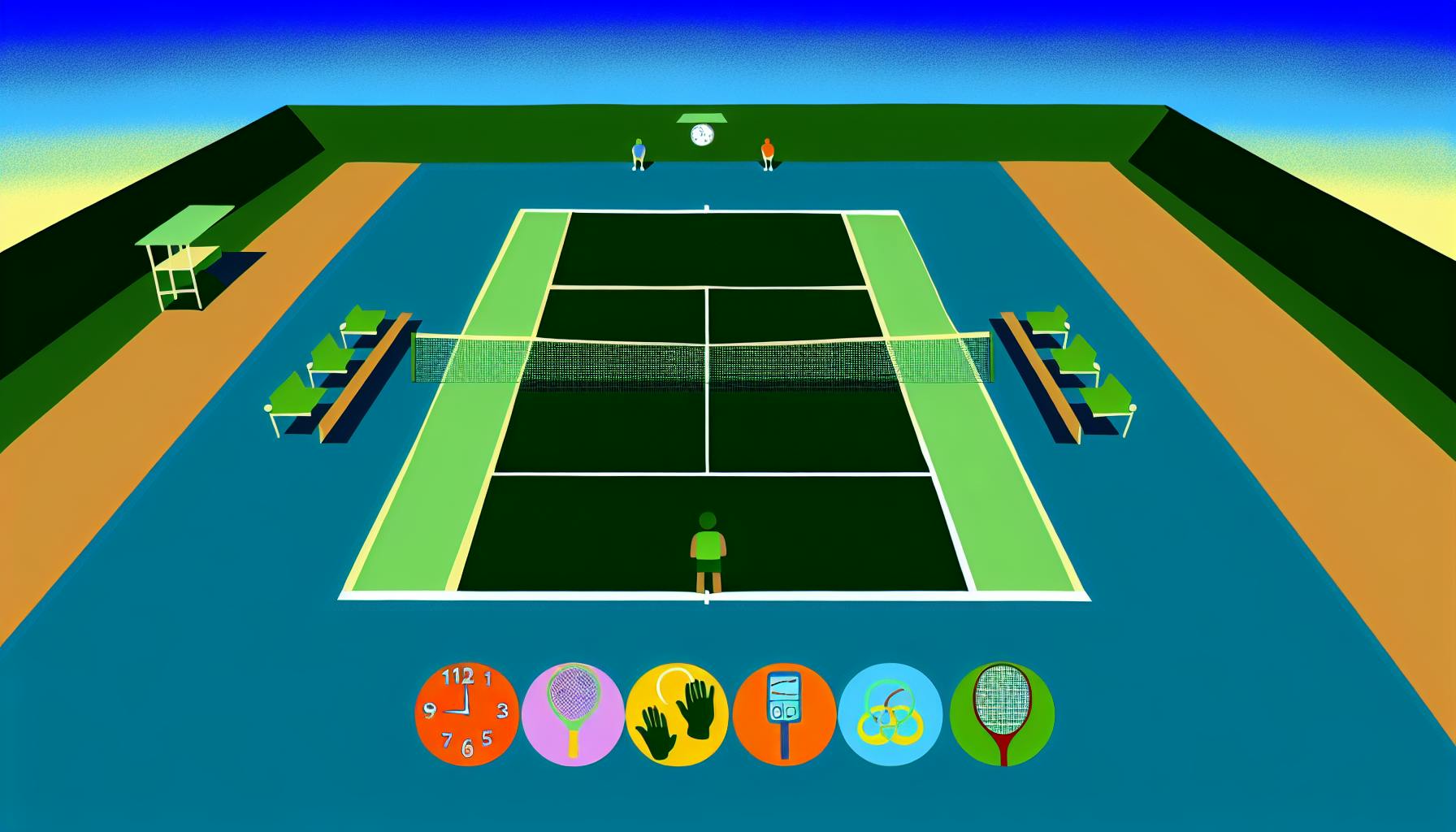String tension can change how your racket feels and performs. It impacts power, control, comfort, spin, and even string durability. Here's what you need to know:
- Higher Tension (55+ lbs): Offers more control and precision but less power. It feels stiffer and may increase vibration, potentially leading to discomfort or injury. Strings wear out faster.
- Lower Tension (45- lbs): Provides more power and spin but less control. Absorbs shock better, making it easier on the arm. Strings last longer but may move more during play.
Key Takeaways:
- Beginners often prefer lower tension for added power and comfort.
- Advanced players lean toward higher tension for better accuracy.
- Adjust tension based on weather, playing style, and court conditions.
- Regular restringing is necessary as strings lose tension over time.
Finding the right tension is about balancing power, control, and comfort to suit your game. Experiment with small adjustments to discover what works best for you.
Tennis String Tension: An In-Depth Guide
How String Tension Affects Your Performance
The tension of your strings significantly impacts every aspect of your game - from the power behind your shots to your overall comfort on the court. Let’s break down how adjusting string tension influences your performance.
Power vs. Control
String tension is a balancing act between power and control. Higher tension creates a stiffer string bed, reducing the "trampoline effect" and offering greater control. On the other hand, lower tension allows the strings to deform more, capturing more energy and generating additional power - though at the expense of precision.
Your skill level also matters. Beginners, who often have slower racket-head speeds, typically benefit from lower tension for added power. Meanwhile, advanced players lean toward higher tension for the precision and control it provides.
Comfort and Injury Risk
Comfort on the court is another factor influenced by string tension. Higher tension tends to transmit more vibrations, which can lead to discomfort or even injury over time. Lower tension, however, absorbs more of the ball’s impact, creating a softer, more forgiving feel. Players dealing with arm discomfort or recovering from injuries often find relief by reducing their string tension by just a few pounds. This adjustment can make a noticeable difference in post-match soreness.
Spin Generation and String Life
If you’re a player who relies on heavy topspin, lower tension might be your best friend. It allows the strings to move more freely, increasing spin potential. Conversely, players who hit flatter shots might prefer slightly higher tension for better control.
String tension also affects durability. Higher tension puts more stress on the strings, leading to quicker wear and tear. In contrast, lower tension generally extends string life by reducing strain. However, heavy spin players may still experience frequent string breakage due to the increased movement of the strings.
High vs. Low Tension: Pros and Cons
Here’s a quick comparison to help you decide:
| Aspect | High Tension (55+ lbs) | Low Tension (45- lbs) |
|---|---|---|
| Power | Less power generated | More power generated |
| Control | Greater precision and accuracy | Less control, more unpredictable |
| Comfort | Stiffer feel, higher vibration | Softer feel, absorbs shock better |
| Spin Potential | Less string movement | More string movement for added spin |
| String Durability | Shorter lifespan | Longer lifespan |
| Injury Risk | Higher risk of discomfort or injury | Lower risk, more arm-friendly |
"The higher your string tension, the more control you'll have on your shots. The looser your string tension, the more power you'll get on each shot."
"Whenever you lessen the stiffness of the strings by reducing tension or by using softer strings, you will direct more energy into the strings and less into the ball, and you will thereby lose less energy and get more power."
Choosing the Right String Tension
Finding the perfect string tension for your racket involves considering several factors, including your skill level, playing style, and even the environment. Let’s break down some practical tips to help you make the best choice for your game.
Skill Level and Playing Style
Your experience on the court plays a big role in determining the right tension. If you're a beginner, lower string tension is often a good starting point. It provides extra power and a softer, more forgiving feel, making it easier to develop consistency. Intermediate players might prefer a moderate tension that offers a balance of power and control, while advanced players typically lean toward higher tension for better precision and responsiveness.
For those aiming to add more spin to their shots, a slightly looser tension can allow the strings to move more freely, enhancing spin potential.
Weather and Playing Conditions
Environmental factors can influence how your racket feels and performs. For instance, in hot weather, strings can feel tighter, so you might want to loosen them slightly to maintain your usual comfort and performance. On the other hand, colder temperatures can make strings feel looser, which may call for a slight increase in tension.
Humidity and altitude also play a role. High humidity can soften string response, while higher altitudes can affect ball flight and string behavior. Small adjustments to your string tension can help you adapt to these changing conditions and keep your performance consistent.
Tension Selection Guide
Start with a baseline tension that feels comfortable and make gradual tweaks as you get a better sense of how your racket responds. Pay attention to how your shots feel - are they delivering the right mix of power, control, and comfort? If not, small adjustments can make a big difference.
Your physical condition is another important consideration. If you’ve experienced discomfort or issues like tennis elbow, lowering your string tension slightly can reduce strain and improve comfort without sacrificing too much performance.
The type of string you use also factors into this decision. Softer strings, like natural gut or multifilament, can handle higher tension while still feeling comfortable. In contrast, stiffer strings, such as polyester, often perform better at lower tensions.
The key is to experiment. Track how different tensions affect your game, and adjust as your playing style evolves or as conditions change. Fine-tuning your setup can make all the difference in achieving your best performance.
sbb-itb-5591e69
Maintaining Your String Tension
Keeping your string tension consistent is key to performing your best on the court. It’s not just about how your racket feels but also how it responds during gameplay. Knowing when and how to adjust your tension can make a big difference in your performance.
String Tension Loss Over Time
Over time, string tension naturally decreases, even if your racket isn’t being used. The biggest drop happens right after stringing, but the decline continues gradually with regular play. Factors like the type of string, how often you play, and the intensity of your shots all play a role.
You might notice this loss in tension through subtle changes in your game. For instance, your shots could feel less accurate, or the stringbed might seem softer and less responsive. A quick way to check is the "finger test" - press the center of the stringbed and compare its firmness to a freshly strung racket. While many players rely on this tactile method, some professionals prefer using tension meters for more precise readings. Being aware of these changes helps you decide when it’s time for maintenance.
When to Restring Your Racket
How often you need to restring your racket depends largely on how frequently you play and your playing style. Competitive players tend to restring more often, but even casual players should watch for signs like notching, fraying, or a noticeable drop in control.
If your shots start veering off-target despite solid technique, or if the strings stop snapping back into place after contact, it’s a good indication that your tension has dropped too much. At this point, restringing can restore your racket’s performance and prevent further frustration during matches.
Court Surface and Ball Type Effects
External factors like the court surface and the type of ball you’re using also affect string tension. Hard courts, for example, tend to wear out strings faster, while softer surfaces are gentler. The weight and material of the ball can also influence tension due to differences in friction and impact forces. Don’t forget about environmental conditions, like temperature and humidity, which can further impact string performance.
Conclusion
String tension plays a pivotal role in shaping your tennis or padel performance. Getting it right can be the difference between hitting consistent, controlled shots or dealing with frustrating mishits.
String tension isn’t something you can set and forget. It requires regular attention and fine-tuning. For most recreational players, moderate tension often strikes a good balance between power and control. However, your ideal tension depends on factors like your playing style, skill level, and even your physical condition. Keep in mind that string tension changes over time, influenced by things like temperature, humidity, and the type of court surface. Staying on top of these changes through regular maintenance can help you maintain consistent performance.
The takeaway? Pay close attention to your racket. Notice how it feels during matches, watch for any dips in performance, and don’t be afraid to experiment within the recommended tension ranges. Whether you’re a casual player or chasing competitive goals, dialing in the right string tension can elevate your game.
Let your strings work for you - not against you.
FAQs
How do I choose the right string tension for my playing style and skill level?
Finding the right string tension is all about aligning it with your playing style, skill level, and on-court priorities. If you're looking for more power and a softer feel, lower string tension (typically around 50–55 lbs) might be your best bet. This setup makes it easier to accelerate the ball and adds an extra layer of comfort.
On the flip side, if control and spin are your main focus, higher string tension (above 55 lbs) is the way to go. It’s particularly useful for players who prioritize precision and accurate shot placement.
Your skill level plays a big role here too. Beginners often find lower tension more forgiving and easier to handle, while advanced players tend to lean toward higher tension for that extra control. The key is to experiment within these ranges and figure out what complements your game best. Whether you’re playing tennis or padel, adjusting your string tension can help you fine-tune your performance to meet your goals.
How can I tell if my racket strings have lost tension and need to be replaced?
Over time, the strings on your racket can lose tension, which directly affects how you play. Here are some telltale signs that your racket might need restringing:
- Decreased power and accuracy: If your shots aren't landing where you want or seem to lack their usual punch, loose strings might be the culprit.
- Muted sound: Instead of that sharp "ping" when you hit the ball, you might hear a dull, flat sound.
- Worn-out strings: Look for fraying or deep notches where the strings cross - these are clear signs of wear.
- Different feel: If your racket feels less responsive or harder to control, it’s likely the string tension has dropped too much.
Keeping an eye on these signs can make a big difference in your game. If you're unsure, a visit to a tennis pro or a reliable facility can help you figure out the best time to restring.
How do temperature and humidity affect string tension and your game?
When it comes to tennis and padel, temperature and humidity can significantly influence how string tension affects your game. Here's how it works:
- Warm weather makes strings more elastic, leading to faster tension loss. This might give you extra power, but it comes at the cost of control, which can make precise shots a challenge.
- Cold weather, on the other hand, makes strings stiffer. This reduces their responsiveness, making it tougher to generate both power and spin.
Humidity is another factor to consider. High humidity levels cause strings to absorb moisture, loosening their tension. This results in less control, which can throw off your performance.
To keep your game steady, adjusting string tension to match the weather conditions is a smart move. It helps you maintain the right balance of power and precision, no matter the environment.


